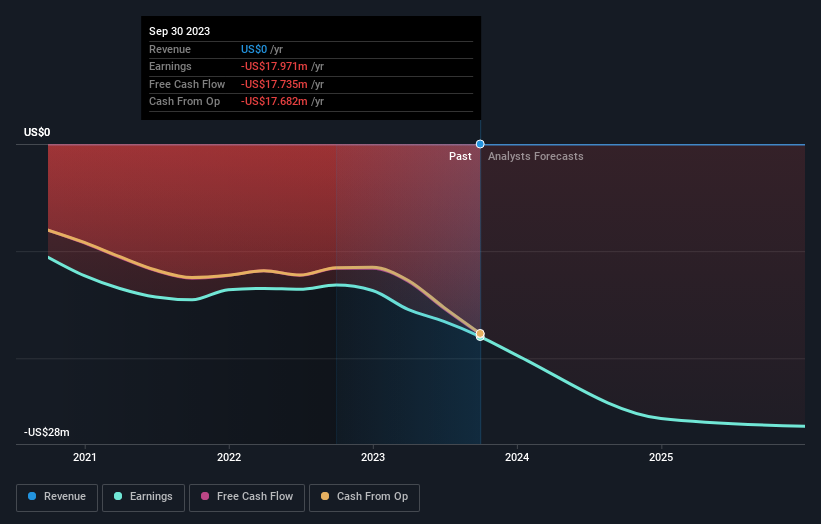Please use a PC Browser to access Register-Tadawul
Individual investors who hold 48% of DiaMedica Therapeutics Inc. (NASDAQ:DMAC) gained 16%, insiders profited as well
DiaMedica Therapeutics DMAC | 4.20 | +3.19% |
Key Insights
- Significant control over DiaMedica Therapeutics by individual investors implies that the general public has more power to influence management and governance-related decisions
- A total of 18 investors have a majority stake in the company with 50% ownership
- Recent purchases by insiders
Every investor in DiaMedica Therapeutics Inc. (NASDAQ:DMAC) should be aware of the most powerful shareholder groups. The group holding the most number of shares in the company, around 48% to be precise, is individual investors. In other words, the group stands to gain the most (or lose the most) from their investment into the company.
Following a 16% increase in the stock price last week, individual investors profited the most, but insiders who own 41% stock also stood to gain from the increase.
Let's delve deeper into each type of owner of DiaMedica Therapeutics, beginning with the chart below.
See our latest analysis for DiaMedica Therapeutics

What Does The Institutional Ownership Tell Us About DiaMedica Therapeutics?
Institutional investors commonly compare their own returns to the returns of a commonly followed index. So they generally do consider buying larger companies that are included in the relevant benchmark index.
We can see that DiaMedica Therapeutics does have institutional investors; and they hold a good portion of the company's stock. This implies the analysts working for those institutions have looked at the stock and they like it. But just like anyone else, they could be wrong. If multiple institutions change their view on a stock at the same time, you could see the share price drop fast. It's therefore worth looking at DiaMedica Therapeutics' earnings history below. Of course, the future is what really matters.

Hedge funds don't have many shares in DiaMedica Therapeutics. Richard Jacinto is currently the company's largest shareholder with 12% of shares outstanding. Thomas von Koch is the second largest shareholder owning 11% of common stock, and Jan Stahlberg holds about 11% of the company stock.
A closer look at our ownership figures suggests that the top 18 shareholders have a combined ownership of 50% implying that no single shareholder has a majority.
While studying institutional ownership for a company can add value to your research, it is also a good practice to research analyst recommendations to get a deeper understand of a stock's expected performance. There are a reasonable number of analysts covering the stock, so it might be useful to find out their aggregate view on the future.
Insider Ownership Of DiaMedica Therapeutics
While the precise definition of an insider can be subjective, almost everyone considers board members to be insiders. The company management answer to the board and the latter should represent the interests of shareholders. Notably, sometimes top-level managers are on the board themselves.
I generally consider insider ownership to be a good thing. However, on some occasions it makes it more difficult for other shareholders to hold the board accountable for decisions.
It seems insiders own a significant proportion of DiaMedica Therapeutics Inc.. Insiders own US$44m worth of shares in the US$107m company. This may suggest that the founders still own a lot of shares. You can click here to see if they have been buying or selling.
General Public Ownership
The general public-- including retail investors -- own 48% stake in the company, and hence can't easily be ignored. While this size of ownership may not be enough to sway a policy decision in their favour, they can still make a collective impact on company policies.
Next Steps:
I find it very interesting to look at who exactly owns a company. But to truly gain insight, we need to consider other information, too. For instance, we've identified 4 warning signs for DiaMedica Therapeutics (2 are potentially serious) that you should be aware of.
If you are like me, you may want to think about whether this company will grow or shrink. Luckily, you can check this free report showing analyst forecasts for its future.
NB: Figures in this article are calculated using data from the last twelve months, which refer to the 12-month period ending on the last date of the month the financial statement is dated. This may not be consistent with full year annual report figures.
This article by Simply Wall St is general in nature. We provide commentary based on historical data and analyst forecasts only using an unbiased methodology and our articles are not intended to be financial advice. It does not constitute a recommendation to buy or sell any stock, and does not take account of your objectives, or your financial situation. We aim to bring you long-term focused analysis driven by fundamental data. Note that our analysis may not factor in the latest price-sensitive company announcements or qualitative material. Simply Wall St has no position in any stocks mentioned.



